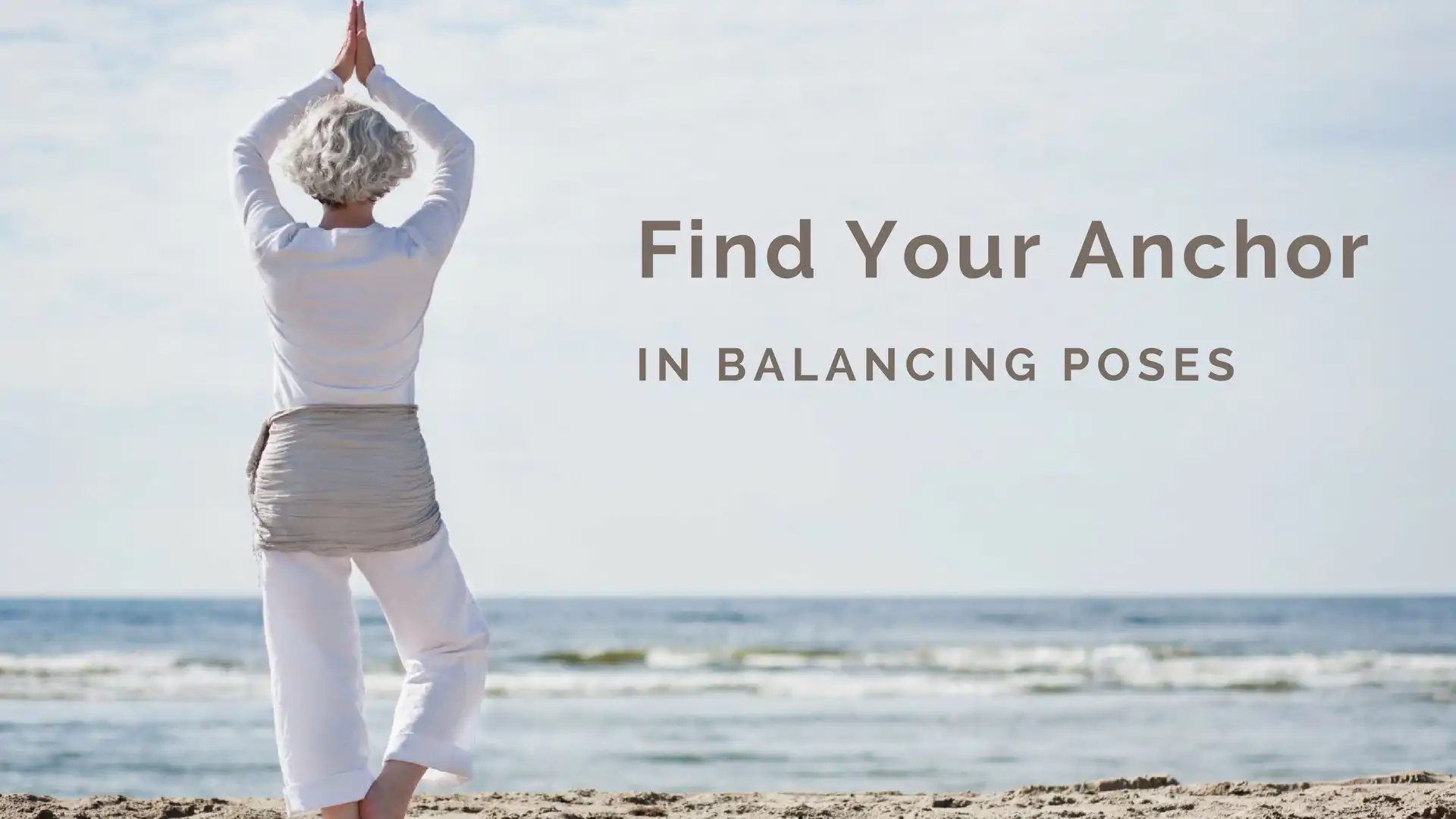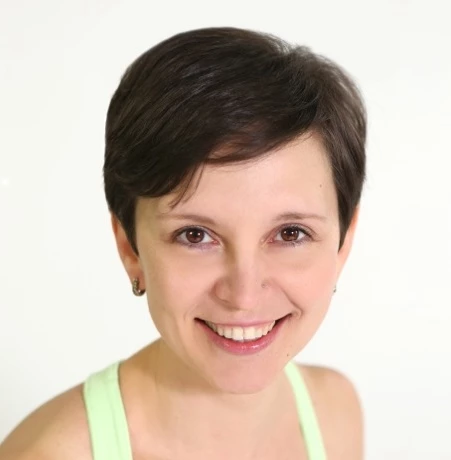How To Find Your Anchor in Balancing Poses

Have you ever noticed how reading in the back seat of the car makes you queasy?
How the Body Creates Balance
This response is pretty typical since it reflects a conflict between three main sensory inputs that inform our sense of balance. When you are riding in the car your vestibular system (inner ear) and proprioceptive system (body pressure receptors) are telling your brain that you are in motion, but your eyes are fixed on the page, so they are saying that you are still. This kind of conflict can lead to slight vertigo.
Here is another example: imagine sitting in the car and waiting for the light to turn green. If the car next to you rolls slightly forward, you will get a feeling that you are rolling backwards. Your vestibular and proprioceptive systems give you the right cues, but we tend to trust our vision more. Vision is the input that the brain relies on as most “trustworthy.” As humans we are highly visual species and the sense of vision exerts an enormous influence on how we perceive the world.
That is why fixing the gaze in balancing yoga poses provides a visual anchor and helps all three systems (visual, vestibular and proprioceptive) work in unison to achieve a state of balance. To test this hypothesis just close your eyes while trying to hold a Tree Pose and notice how much more difficult it is to balance.
Drshti: Fixed Gaze Balancing in Yoga
In yoga we call this drshti (or drishti), which means fixing the gaze on a stable object without straining the body or eyesight. One purpose of drshti is to help you balance in more challenging yoga postures, but it also has another important task of focusing your attention.
The wandering eye and the wandering mind are very closely linked. Just think back to your last yoga class and how things that you saw affected your train of thought: “I wish I could bend as deep as that chick,” “That’s a cute tank top,” “I need a pedicure,” and so on. We move our eyes from one thing to another forming opinions and passing judgments. This is the normal activity of the “vortex of the mind.” But if we intentionally focus the eyes on some external point while maintaining internal awareness, we begin to move toward one-pointed focus.
Shifting Drshti from External to Internal
Your point of focus doesn’t have to be external. You can “hook” your attention to anything – here are some examples of drshti moving from external to more internal:
- any sturdy object at the eye level or below (external)
- point of contact between the body and the floor (external + internal)
- part of the body (feet, legs, hands, etc) (internal-physical)
- flow of breath (internal-more subtle)
- repetition of mantra (internal-even more subtle)
Different combinations of those work particularly well. For example, you can fix your gaze on a stable object and focus on regulating your breathing pace while chanting a simple mantra. This will help you focus the mind and as a result it will become easier to balance. This is a two-way street: balancing helps you focus your mind and focusing your mind helps you balance. Both are essential for optimal daily functioning. Your ability to balance keeps you agile, strong and confident, while a focused mind keeps you sharp, present, mentally and emotionally stable.
“According to some scientific observations, the mind can grasp only one thing at a time, passing extremely quickly from one thing to another. This gives an impression of simultaneity, and the illusion of movement as in film. A focused mind is a natural state that re-centers all energies, allowing great acuteness in observation as well as in action. This state gives optimal force to mental function, like a laser beam.” (The Essence of Yoga by Bernard Bouanchaud).
Study with YogaUOnline and Baxter Bell, MD – Yoga for Core Integrity and Balance.
Reprinted with permission from sequencewiz.com
 Educated as a school teacher, Olga Kabel has been teaching yoga for over 14 years. She completed multiple Yoga Teacher Training Programs, but discovered the strongest connection to the Krishnamacharya/ T.K.V. Desikachar lineage. She had studied with Gary Kraftsow and American Viniyoga Institute (2004-2006) and received her Viniyoga Teacher diploma in July 2006 becoming an AVI-certified Yoga Therapist in April 2011. Olga is a founder and managing director of Sequence Wiz- a web-based yoga sequence builder that assists yoga teachers and yoga therapists in creating and organizing yoga practices. It also features simple, informational articles on how to sequence yoga practices for maximum effectiveness. Olga strongly believes in the healing power of this ancient discipline on every level: physical, psychological, and spiritual. She strives to make yoga practices accessible to students of any age, physical ability and medical history specializing in helping her students relieve muscle aches and pains, manage stress and anxiety, and develop mental focus.
Educated as a school teacher, Olga Kabel has been teaching yoga for over 14 years. She completed multiple Yoga Teacher Training Programs, but discovered the strongest connection to the Krishnamacharya/ T.K.V. Desikachar lineage. She had studied with Gary Kraftsow and American Viniyoga Institute (2004-2006) and received her Viniyoga Teacher diploma in July 2006 becoming an AVI-certified Yoga Therapist in April 2011. Olga is a founder and managing director of Sequence Wiz- a web-based yoga sequence builder that assists yoga teachers and yoga therapists in creating and organizing yoga practices. It also features simple, informational articles on how to sequence yoga practices for maximum effectiveness. Olga strongly believes in the healing power of this ancient discipline on every level: physical, psychological, and spiritual. She strives to make yoga practices accessible to students of any age, physical ability and medical history specializing in helping her students relieve muscle aches and pains, manage stress and anxiety, and develop mental focus.



